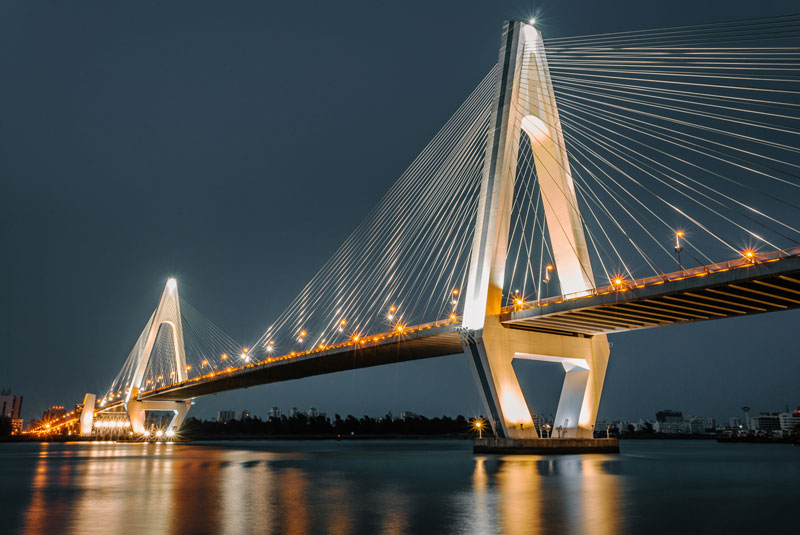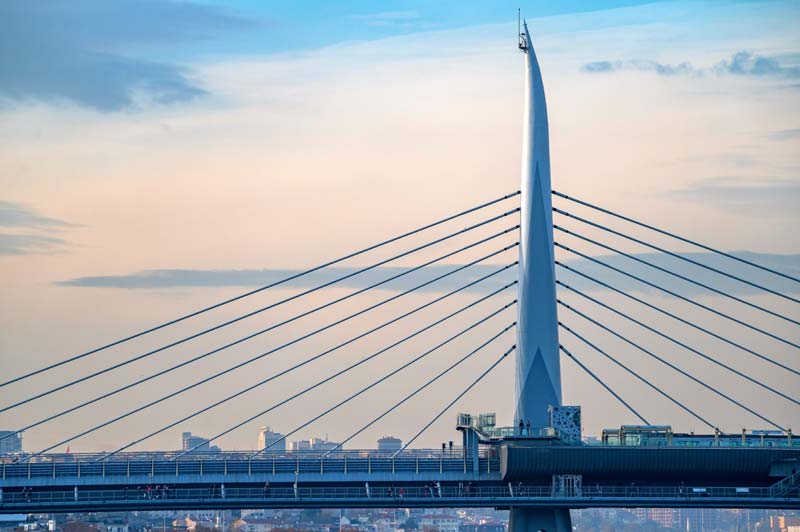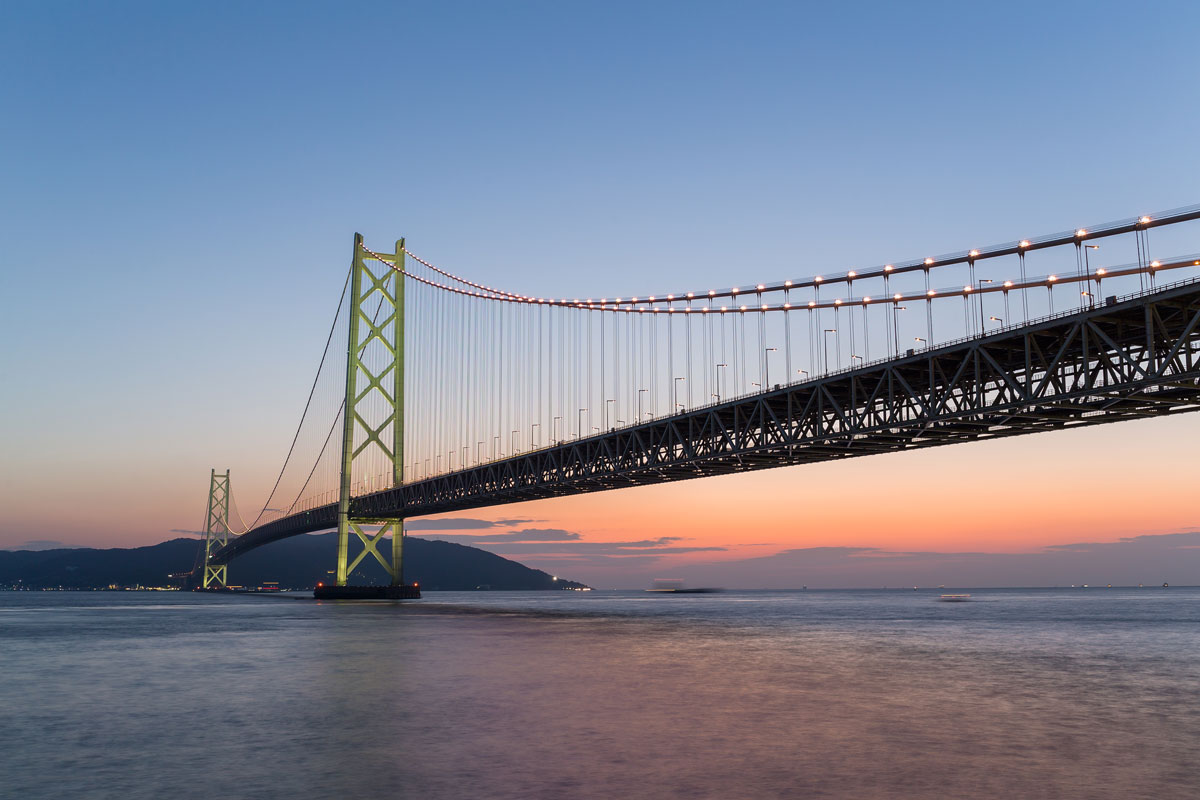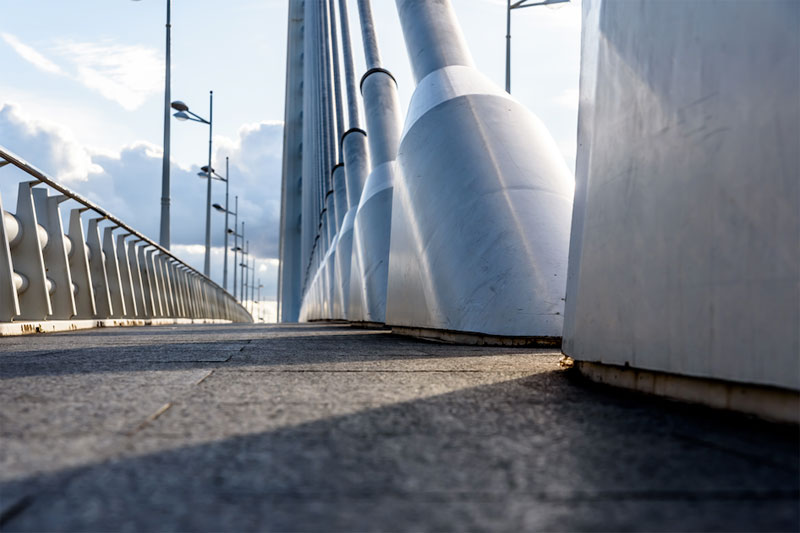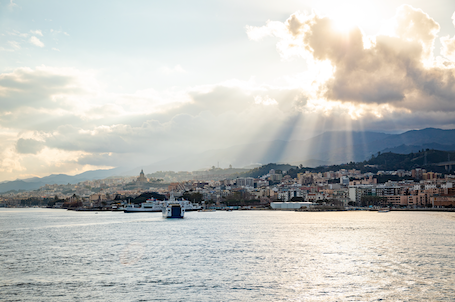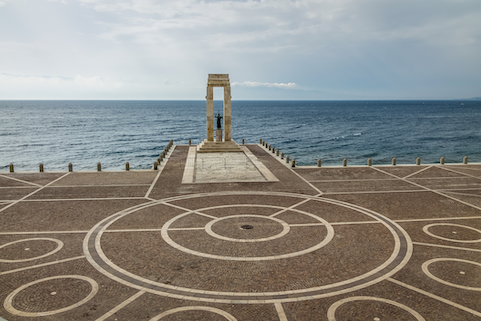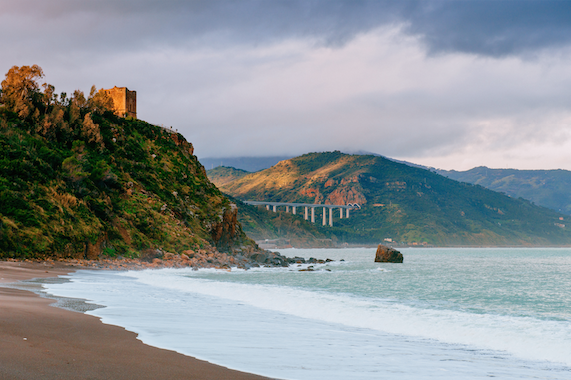INFRASTRUCTURE
Ponte di Messina
A Unique Italian Achievement
The Messina Bridge is an unprecedented infrastructure, designed to unite two shores historically close yet physically separated. With its many records, it represents a unique engineering and technological challenge. The project goes beyond connecting Sicily and Calabria: it is the heart of an integrated system of roads, railways, and stations serving Italy and Europe.
HIGHLIGHT
Ponte di Messina
DETAILS
Ponte di Messina
The Bridge over the Strait of Messina is conceived as an epoch-making infrastructure, destined to radically transform mobility and the identity of Southern Italy. It is not only a physical link between Sicily and Calabria but also a symbolic and strategic work that will unite two shores tied by centuries of exchanges, culture, and traditions, while integrating them into the major European transport corridors.
The main structure will be a single-span suspension bridge with a central length of 3,300 meters, an absolute world record surpassing all existing bridges. Two 399-meter towers will support the deck, comparable in size to the world’s tallest skyscrapers, while the 60-meter-wide deck will host six traffic lanes and two railway tracks. This configuration will ensure the full continuity of Italy’s motorway and railway networks, including high-speed rail, allowing Sicily to be directly connected with the rest of continental Europe for the first time.
The project also includes over 40 km of complementary roads and railway lines on both shores. In Calabria, direct connections will be built with the A2 motorway and the future high-capacity Salerno–Reggio Calabria railway line. In Sicily, the connections will involve the Messina–Palermo and Messina–Catania routes, decisively improving the island’s internal connectivity.
From an engineering standpoint, the Bridge will be an example of technological excellence and resilience. Designed to withstand earthquakes over magnitude 7.5 and winds up to 300 km/h (162 knots), it will employ advanced materials and real-time monitoring systems to ensure maximum safety and an estimated lifespan of over 200 years.
Beyond its infrastructural value, the Bridge will have extraordinary symbolic and cultural impact. It will become an international landmark, comparable to the Golden Gate in San Francisco or the Millau Viaduct in France, attracting visitors from around the world drawn by its grandeur and the beauty of its natural setting.
In short, the Bridge over the Strait of Messina will be a work that unites technology and vision, engineering and culture: a gateway to the future, capable of turning the Strait into both a real and symbolic bridge between Europe and the Mediterranean.
Technical Data Sheet – Messina Bridge
-
Type: Single-span suspension bridge
-
Central span length: 3,300 m (world record)
-
Tower height: 399 m (tallest in Europe for a suspension bridge)
-
Deck width: 60 m
-
Road lanes: 6 (3 per direction)
-
Railway tracks: 2 (standard + high-speed)
-
Complementary works: over 40 km of roads and railways on both shores
-
Traffic capacity: up to 6,000 vehicles/hour and over 200 trains/day
-
Seismic resistance: up to magnitude 7.5
-
Wind resistance: up to 300 km/h (162 knots)
-
Estimated lifespan: over 200 years
-
Main functions: road and rail mobility
-
Integration: with the European TEN-T corridors
AMBIENTE E TERRITORIO
Stretto di Messina
The Strait Cities, Messina and Reggio Calabria, are the two poles that shape a unique territory in the Mediterranean. Separated by just a few kilometers of sea yet united by centuries of history, trade, and cultural ties, they represent one great community. Messina, the gateway to Sicily, preserves iconic monuments such as the Cathedral and the Astronomical Clock; Reggio Calabria, the cultural capital of the Calabrian shore, is renowned for the Riace Bronzes and its seafront promenade. Together they embody the living identity of the Strait: a reality that blends myth, nature, and modernity.
NEWS
Ponte di Messina



